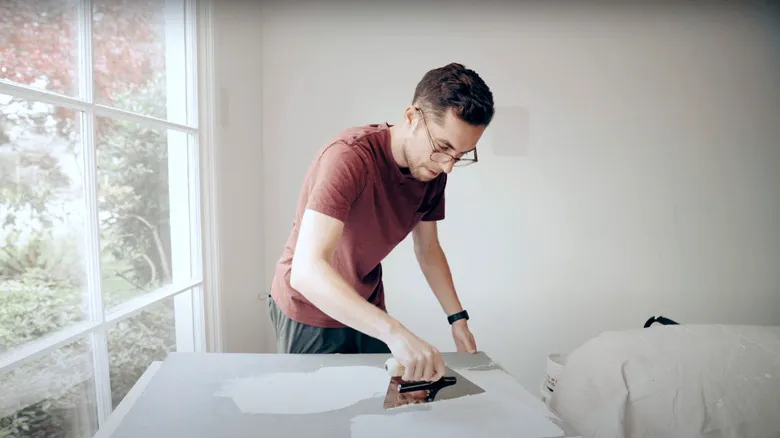Common Mistakes to Avoid When Buying and Applying Venetian Plaster

Venetian plaster is a luxurious and timeless choice for enhancing the beauty of your interiors. However, when you buy Venetian plaster and begin the application process, it’s essential to be aware of potential pitfalls that could affect the outcome. Whether you’re a DIY enthusiast or planning to hire a professional, knowing what to avoid will help ensure that your project is a success, delivering stunning results that stand the test of time.
1. Choosing the Wrong Type of Venetian Plaster
One of the most common mistakes people make is selecting the wrong type of Venetian plaster for their project. When you buy Venetian plaster, you’ll notice that it comes in various types, such as lime-based, synthetic, or acrylic. For example, lime-based plaster is ideal for a natural, breathable finish, while synthetic options may offer more durability in high-traffic areas. Before making a purchase, take the time to research the types of Venetian plaster available and choose the one that best suits your needs and the specific conditions of your space.
2. Underestimating the Importance of Surface Preparation
Surface preparation is crucial when applying Venetian plaster. Failing to properly prepare the surface can lead to poor adhesion, uneven texture, and unsightly results. Before you apply the plaster you’ve bought, make sure the surface is clean, dry, and smooth. Any cracks, holes, or imperfections should be repaired, and the surface should be primed appropriately. Skipping or rushing through this step is a common mistake that can compromise the quality of the final finish.
3. Overlooking the Need for Multiple Coats
Venetian plaster achieves its characteristic depth and shine through the application of multiple coats. A common mistake is assuming that one or two coats will suffice. In reality, achieving the desired finish often requires three to five coats, with each layer carefully applied and polished. Cutting corners by applying fewer coats will result in a less vibrant and durable finish. When you buy Venetian plaster, ensure you have enough to complete the necessary number of coats for the best results.
4. Improper Mixing of the Plaster
Mixing Venetian plaster correctly is essential for a smooth and consistent application. A common mistake is not mixing the plaster thoroughly, leading to an uneven texture or color. When you buy Venetian plaster, be sure to follow the manufacturer’s instructions carefully, and take the time to ensure that the plaster is fully blended. If you’re using pre-mixed plaster, make sure to stir it well before application to avoid inconsistencies.
5. Skipping the Burnishing Process
Burnishing is a key step in achieving the classic polished look of Venetian plaster. This process involves pressing the plaster with a trowel or a burnishing tool to create a smooth, shiny surface. Skipping or improperly performing this step is a common mistake that can leave the plaster looking dull and unfinished. After you apply the final coat of the plaster you’ve bought, take the time to burnish it, applying even pressure to bring out the desired sheen.
6. Not Considering the Environmental Conditions
Environmental factors such as temperature and humidity can significantly impact the application and drying process of Venetian plaster. Applying plaster in a room that is too hot, cold, or humid can lead to cracking, peeling, or uneven drying. It’s a common mistake to overlook these conditions, especially in DIY projects. When you buy Venetian plaster, also consider the environmental conditions in your space and ensure that the room is within the recommended temperature and humidity range during application and drying to avoid potential issues.
7. Neglecting Proper Maintenance
Venetian plaster is known for its durability, but it still requires proper maintenance to keep it looking its best. A common mistake is neglecting the care and upkeep of the plastered surface. Regularly dusting and cleaning the surface with a soft, damp cloth can help maintain its luster. Additionally, consider applying a wax finish for added protection and shine, especially in high-traffic areas.
Conclusion
Avoiding these common mistakes when you buy Venetian plaster and begin the application process will help you achieve the stunning, high-quality finish that this material is known for. Whether you’re a DIY enthusiast or working with a professional, taking the time to research, prepare, and follow proper application techniques will ensure that your Venetian plaster project is a success. With careful attention to detail and a commitment to quality, you can enjoy the timeless beauty and elegance that Venetian plaster brings to any space.
FAQs
1. What should I consider before I buy Venetian plaster?
Before you buy Venetian plaster, consider the type of plaster that best suits your needs—whether it’s lime-based, synthetic, or acrylic. Also, assess the condition of your walls and ensure proper surface preparation for the best results.
2. Can I apply Venetian plaster myself, or should I hire a professional?
While DIY application of Venetian plaster is possible, it requires careful attention to detail, especially in surface preparation, mixing, and applying multiple coats. Hiring a professional may be advisable if you’re unfamiliar with the process or want to ensure a high-quality finish.
3. How many coats of Venetian plaster do I need for a proper finish?
To achieve the best results, Venetian plaster typically requires three to five coats. This allows for the depth and shine that Venetian plaster is known for. Skipping coats or applying too few can result in a less durable and vibrant finish.





